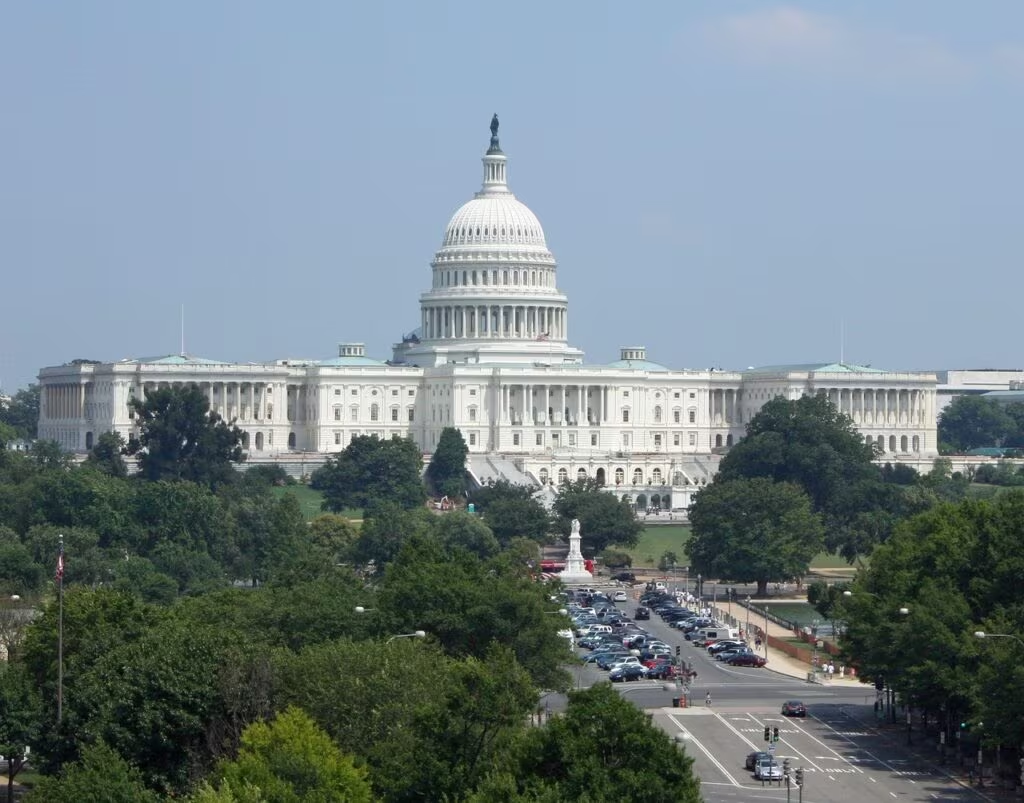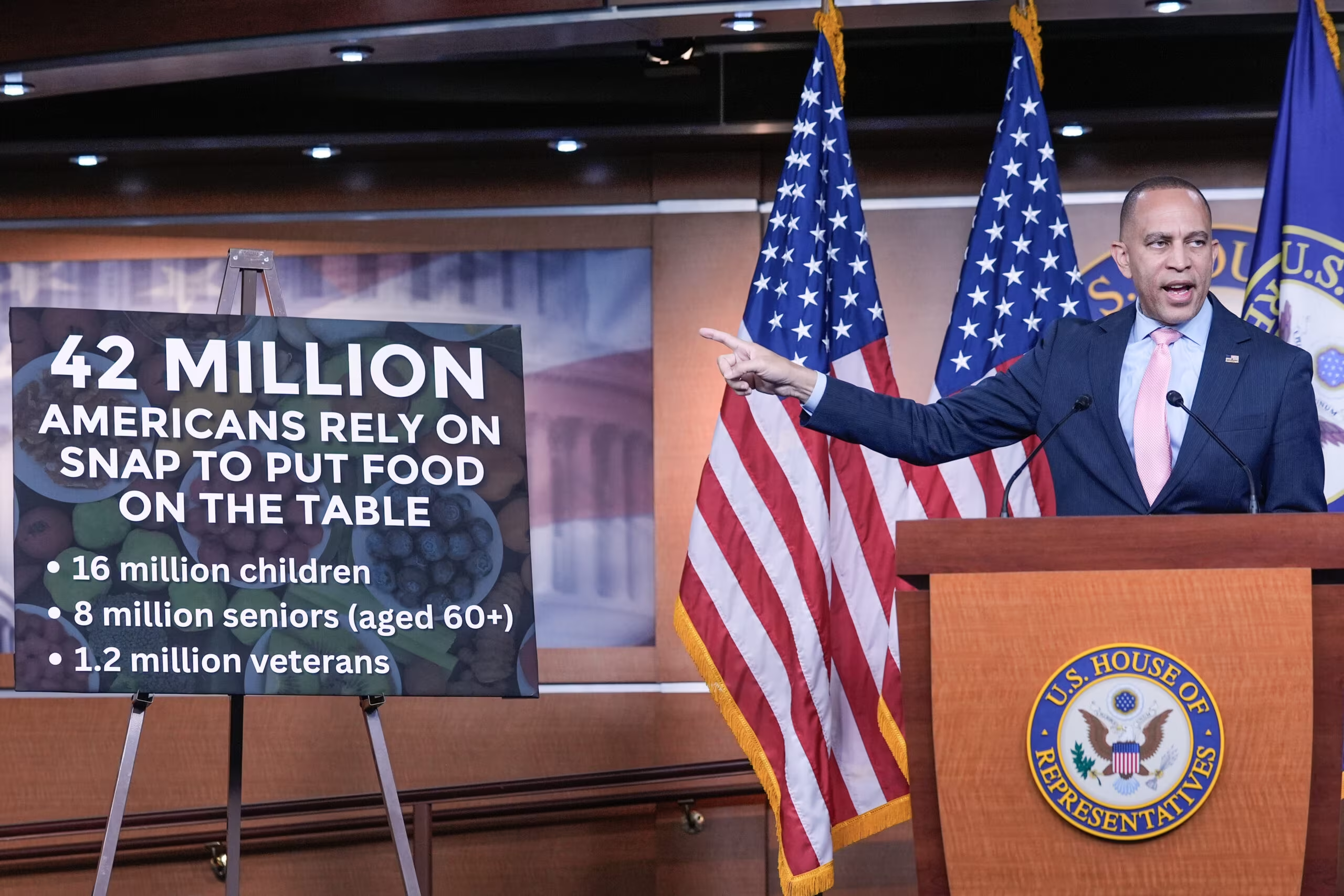Trump Urges Senate to Eliminate Filibuster Amid Shutdown Crisis
In a dramatic escalation of the political deadlock gripping Washington, former President Donald Trump has publicly called on the Senate to eliminate the legislative filibuster. His demand, issued during a protracted government shutdown in October 2025, was framed as the only viable path for the Republican majority to bypass Democratic opposition and immediately pass appropriations bills necessary to reopen federal agencies.
Trump’s statement targets the core procedural mechanism of the Senate, arguing that the 60-vote threshold required to end debate (cloture) is an outdated impediment that grants the minority party undue power, thereby paralyzing governance during critical moments like a shutdown.
“THE CHOICE IS CLEAR,” Trump stated. “The Senate must scrap the filibuster immediately. The Republican majority has the votes to fund the government and end this shutdown, but they are being held hostage by an archaic rule that empowers the minority. It’s time for the Nuclear Option to save the country.”
This aggressive stance reignites a long-standing debate over Senate rules and highlights the deep institutional friction between the executive branch and the legislative body, particularly when legislative gridlock prevents essential government functions.
Understanding the Legislative Roadblock: The 60-Vote Rule
The Senate filibuster, rooted in Rule XXII, allows a single senator or a group of senators to delay or block a vote on a bill through extended debate. To overcome a filibuster and force a final vote, the Senate must invoke cloture, which requires a supermajority of 60 votes (three-fifths of the 100-member body).
In the context of a government shutdown, this rule becomes particularly potent. Appropriations bills, which authorize federal funding, are subject to the filibuster. If the majority party (in this case, Republicans) holds fewer than 60 seats, they cannot pass funding bills without the cooperation of at least some members of the minority party (Democrats).
Why the Filibuster is Central to the Shutdown:
- Minority Veto Power: The filibuster grants the minority party effective veto power over most legislation, forcing the majority to negotiate and compromise.
- Appropriations Bills: Funding measures, which are non-negotiable for keeping the government open, are stalled because the minority refuses to grant the 60 votes needed for cloture unless their policy demands are met.
- Political Leverage: For the minority, the filibuster is the primary tool for extracting concessions from the majority, often leading to high-stakes confrontations like government shutdowns.

The “Nuclear Option” and Historical Precedent
Trump’s call to “scrap the filibuster” refers to the “nuclear option,” a procedural maneuver that allows the majority to change Senate rules by a simple majority vote (51 votes), rather than the two-thirds majority traditionally required for rule changes.
While the legislative filibuster remains intact for most bills, its use has been curtailed in recent years, setting precedents for its elimination in specific areas:
- 2013: Democrats, led by then-Majority Leader Harry Reid, invoked the nuclear option to eliminate the filibuster for most presidential nominations, excluding Supreme Court nominees.
- 2017: Republicans, led by then-Majority Leader Mitch McConnell, extended the nuclear option to include Supreme Court nominees, ensuring Neil Gorsuch’s confirmation and subsequent appointments could proceed with a simple majority.
Eliminating the legislative filibuster entirely—the step Trump is now advocating—would be the most significant procedural change in modern Senate history, fundamentally altering the balance of power and the nature of American governance.
Implications of Ending the Filibuster
If the filibuster were eliminated for legislation, the Senate would operate much like the House of Representatives, where the majority party can pass nearly any bill it chooses with 51 votes. Experts warn this would lead to:
- Increased Partisanship: Legislation would swing wildly between administrations, eliminating the need for bipartisan consensus.
- Reduced Minority Rights: The minority party would lose its most powerful tool for influencing policy and protecting its constituents’ interests.
- Rapid Policy Shifts: Major, controversial legislation (like comprehensive immigration reform or significant tax changes) could be passed quickly, making policy less stable and predictable.

Political Dynamics and Senate Reactions
Trump’s demand puts significant pressure on Senate Republican leadership, who have historically been divided on the issue of eliminating the legislative filibuster. While many rank-and-file Republicans are frustrated by the current gridlock, senior senators often express concern about the long-term consequences of simple majority rule.
Majority Leader’s Dilemma: The Republican Majority Leader faces a difficult choice. Adopting Trump’s suggestion would guarantee an immediate end to the shutdown and allow the passage of key Republican priorities. However, it would also strip the party of the filibuster protection when they inevitably return to the minority status, leaving them vulnerable to rapid legislative changes by future Democratic majorities.
Democratic Response: Senate Democrats have universally condemned the suggestion, characterizing it as an attempt to dismantle the institutional checks and balances of the legislative branch. They argue that the filibuster is essential for protecting the rights of the minority and ensuring that legislation has broad national support.
“The filibuster is the last guardrail against radical policy swings,” stated Senator Chuck Schumer (D-NY), a prominent voice in the minority. “To eliminate it now, purely to score a short-term political victory and end a shutdown caused by the majority’s own intransigence, would be an act of institutional vandalism.”
Historically, both parties have defended the filibuster when in the minority and considered eliminating it when in the majority, demonstrating the rule’s inherent political utility.
Key Takeaways: The Filibuster and the Shutdown
Trump’s call to scrap the filibuster is a high-stakes political maneuver aimed at breaking the current government shutdown. Here are the essential points readers need to know:
- The Demand: Former President Trump urged the Senate to use the “nuclear option” to eliminate the 60-vote legislative filibuster.
- The Goal: To allow the Republican majority to pass funding bills with a simple 51-vote majority, thereby ending the government shutdown immediately without Democratic support.
- The Mechanism: The filibuster requires 60 votes (cloture) to end debate on most bills, including appropriations, giving the minority party leverage.
- The Consequence: Eliminating the filibuster would fundamentally transform the Senate into a simple majority rule body, leading to more rapid, but potentially less stable, policy changes.
- The Political Risk: While eliminating the filibuster would solve the immediate shutdown crisis for the majority, it would remove their protection when they eventually become the minority party.
The Path Forward
The immediate fate of the government shutdown hinges on whether Senate Republican leadership chooses to heed Trump’s demand. While the pressure from the former President and the public frustration over the shutdown are intense, many institutionalists within the Senate remain wary of enacting such a drastic procedural change.
If the Senate maintains the filibuster, the shutdown will continue until either the Republican majority compromises on policy to gain Democratic votes, or the Democrats concede to the Republican funding demands. If the Senate does move to eliminate the filibuster, the immediate result would be the swift passage of funding bills and the end of the shutdown, but the long-term cost would be a permanent shift in the legislative power structure of the United States.
Original author: The Associated Press
Originally published: October 31, 2025
Editorial note: Our team reviewed and enhanced this coverage with AI-assisted tools and human editing to add helpful context while preserving verified facts and quotations from the original source.
We encourage you to consult the publisher above for the complete report and to reach out if you spot inaccuracies or compliance concerns.

